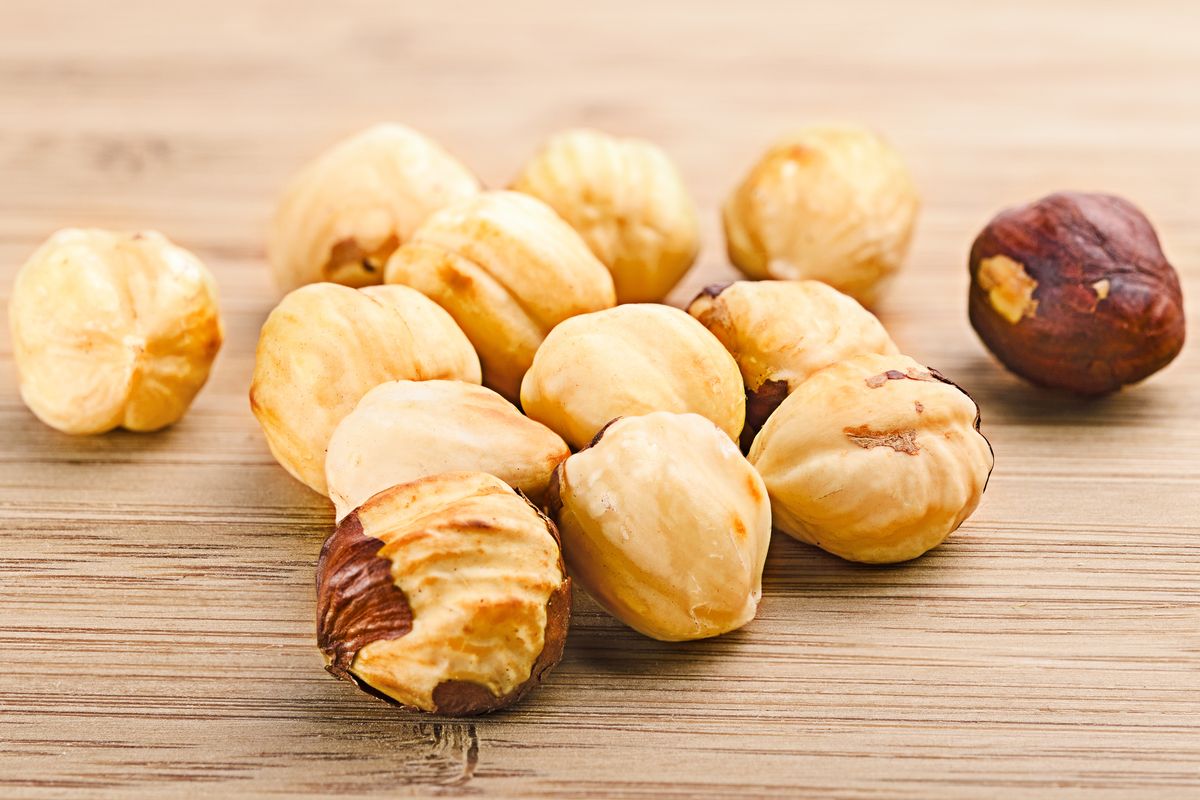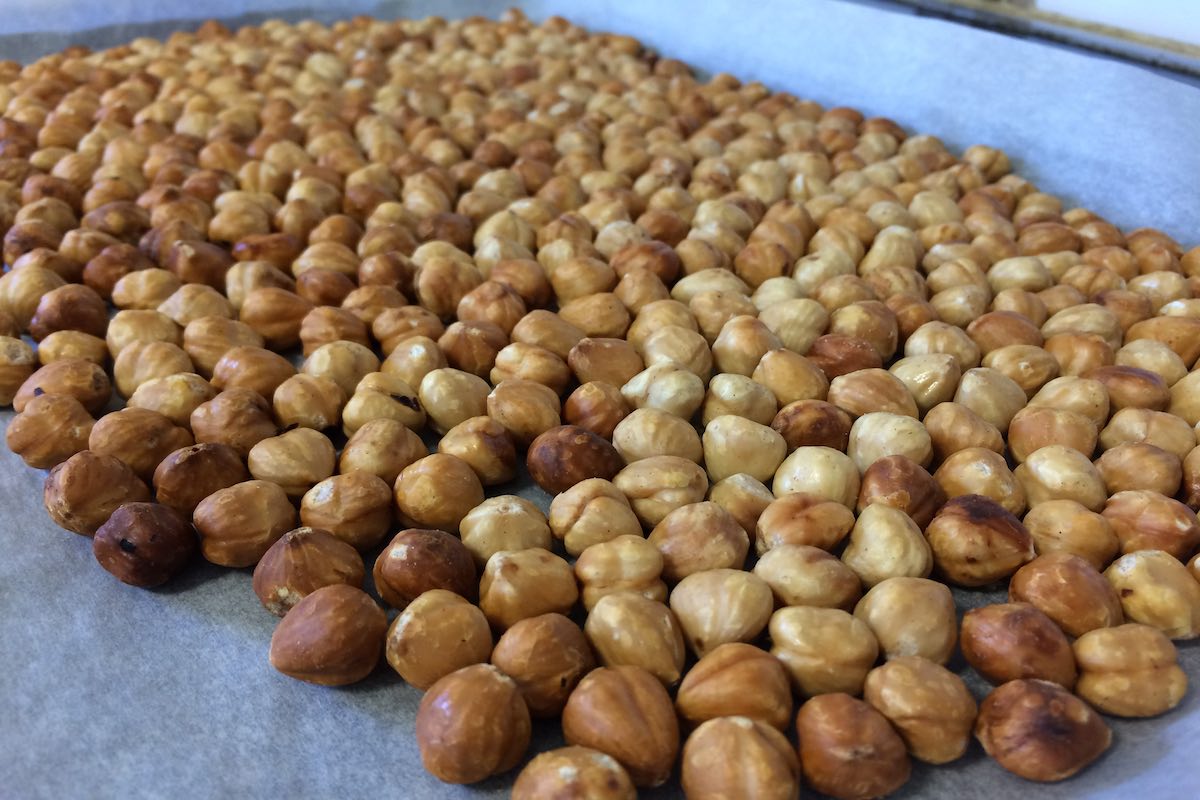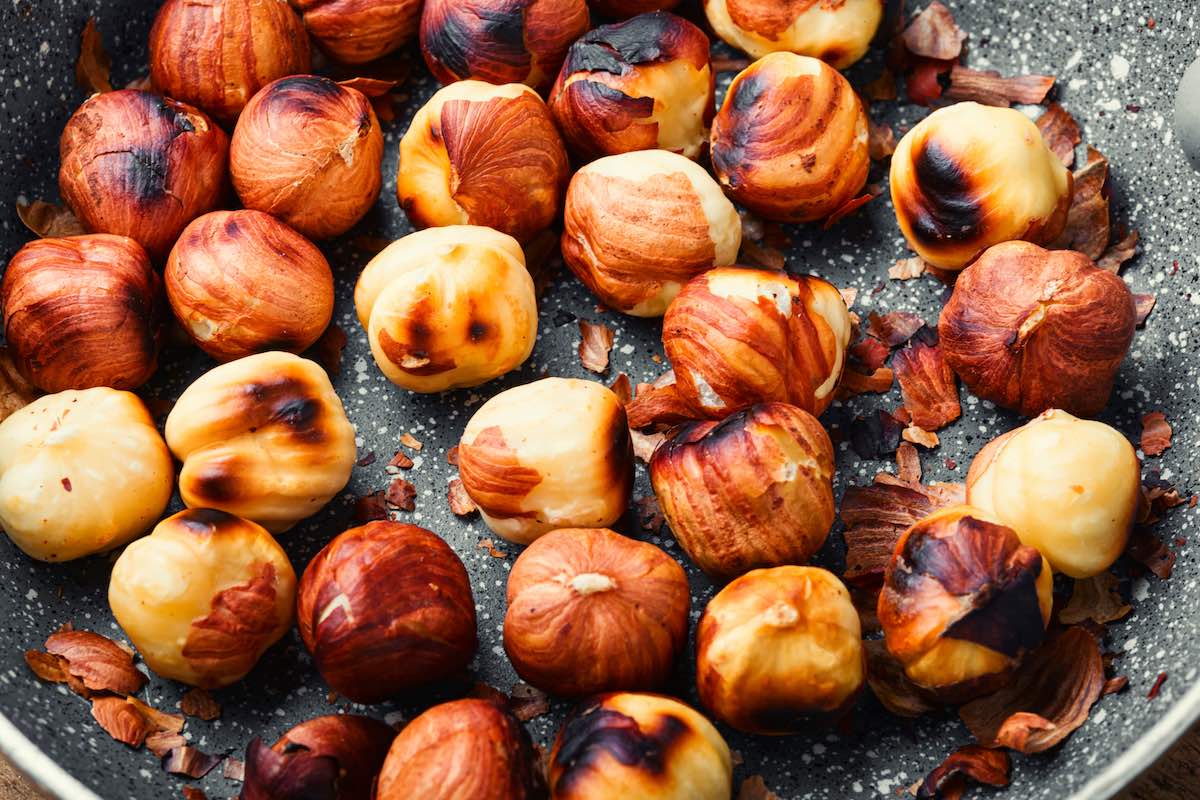Recipes
How to toast hazelnuts? Procedure and advice


Here's how to toast hazelnuts (in the oven, in the pan and in the microwave) to use them in your recipes and preserve them at their best.
Hazelnuts are a variety of dried fruit native to Asia. For some time now they have been part of the typical products of Italian excellence and are widely used in the preparation of desserts with hazelnuts, creams and condiments of all kinds. To make the best use of them, the hazelnuts are toasted and peeled; only at this point can they be reduced to grain or flour .
Roasting hazelnuts is a rather simple operation, which can also be done at home, following some instructions. Let's immediately see how to toast shelled hazelnuts (and peel them quickly) to best preserve them and use them in the preparation of tasty recipes!
- Toast the hazelnuts in the oven
- Toast the hazelnuts in the pan
- Toast the hazelnuts in the microwave
- How to remove cuticle
- Property

How to toast hazelnuts in the oven?
- Line a baking tray with baking paper, place the shelled hazelnuts on top and bake in a preheated oven at 200°C for 5-6 minutes .
- During these few minutes, take care to check and turn the hazelnuts often because in a very short time they could toast and become bitter, burnt and unusable.
- Once the hazelnuts have browned, turn off the oven and leave to rest for another 5 minutes before removing the pan from the oven. Then transfer them to a cold baking tray to stop the process.
A tip: if you prefer a less aggressive roasting you can bake at 160°C for 10 minutes, then leave them for 10 minutes in the oven off before transferring them to a cold baking tray.
To toast hazelnuts in their shells, the procedure is similar. Spread them out on a baking tray and bake at 180°C for 15 minutes, turning them after the first 5 minutes to obtain uniform toasting. Test the doneness by peeling one: it should be well golden . If, however, the color is more cream-like, continue for another 5 minutes. Even in this case it is better to cool them on a cold baking tray.
Here is a video to understand when the hazelnuts are actually toasted to the right point.
At this point they are excellent for making a delicious hazelnut paste or transforming them into hazelnut flour or even into chopped hazelnuts, ideal for decorating desserts.

How to toast hazelnuts in a pan?
A valid alternative to roasting hazelnuts in the oven is roasting them in a pan.
- Place the hazelnuts in a non-stick pan without filling it too much.
- Cover with the lid and turn on the heat. Toast over medium heat for about ten minutes, then turn off the stove and leave to cool for a couple of minutes .
How to toast hazelnuts in the microwave
Given that the result will not be like the previous methods, it is still possible to toast the hazelnuts with the help of the microwave. To do this, spread them on a plate and cook at maximum power 1 minute at a time, until toasted. The total time depends on your device. To test their crunchiness you will have to taste them as the color will always tend to remain rather light.
How to peel toasted hazelnuts?
Once roasting is complete, the next step is peeling . We reveal a trick to hurry up and remove the skin from quickly toasted hazelnuts: wrap the hazelnuts with a clean cloth, rub gently and let all the skin slide off. Very simple!
Don't try to remove the skin before roasting: it would be much more difficult, if not practically impossible .
If, however, you want to peel the hazelnuts without toasting them, then transfer them without the shell into a container and cover them loosely with water. Place them in the microwave at maximum power for 1 minute and a half then let them cool and peel them.
Toasted and peeled hazelnuts can be stored whole in an airtight glass jar in a cool (not above 20 degrees) and dry place for several months.
Roasted hazelnut calories and properties
Hazelnuts are not a "dietetic" food, as they contain many calories: 655 Kcal per 100 g . However, they are rich in good fats (oleic acid and linoleic acid), perfect because they act as a scavenger against bad cholesterol (LDL).
Like most dried fruit, they have preventive and protective properties against heart disease and are said to be able to reduce the onset of some types of cancer. They are rich in Vitamin E, trace elements and minerals such as calcium, phosphorus and magnesium .
Riproduzione riservata © - WT












